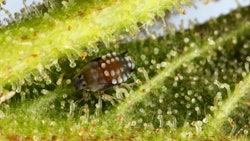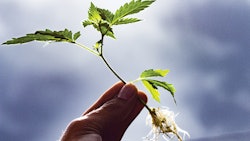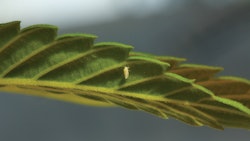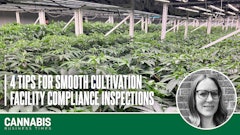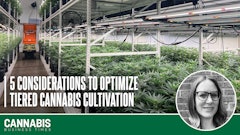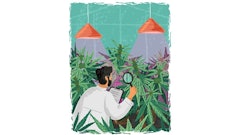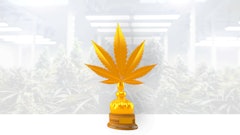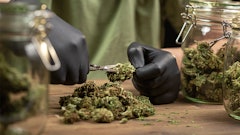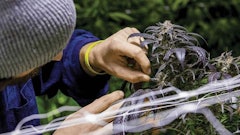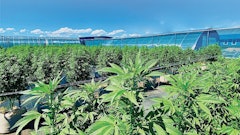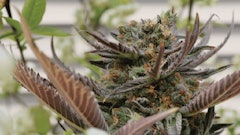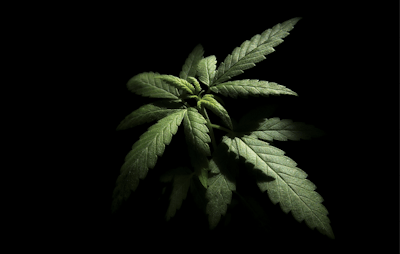
While photosynthetically active radiation (PAR) levels and spectrum are the most commonly discussed lighting subtopics, it is the absence of light that controls the all-important onset, or induction, of flowering. Understanding how plants react to light deprivation is key to using deprivation systems to their fullest advantage. Outdoor growers are tied to the sun’s schedule-but grow those same plants inside a light-deprivation greenhouse, and growers have a new set of tools that offer significant improvements in yield and schedule.
Outdoor Handcuffs
Short day plants—such as cannabis—all share the characteristic of not blooming until they experience a critical day length of so many hours of light. This critical day length (CDL) varies between plant species. For example, the familiar poinsettia has a CDL of 12 hours and 15 minutes. Once days reach the CDL, seven to 20 of these shorter days will force poinsettias to flower, according to “Light Duration” by J. Raymond Kessler, Jr. of Auburn University. In nature, that CDL is reached around the end of December, which is why poinsettias have become a mainstay of the winter holidays.
Cannabis reacts the same way to short days. Since it flowers in nature long before December, one would surmise it requires a longer CDL than poinsettias. And under the sun, growers find the CDL their cannabis crops need is right around 14 hours, according to peer-reviewed studies in the Australian Journal of Experimental Agriculture and the Journal of Natural Fibers.
Outdoor and seasonal greenhouse growers are handcuffed to the CDL and can’t rush the day the CDL is reached. Outdoor plants near Portland, Ore., for example, reach the 14-hour CDL 10 days later than plants just 5 latitude degrees south, near Denver.
The day the CDL is reached is equivalent to moving indoor veg plants into the flower rooms, so all pre-flower growing plans are tied to that date.
Cheat the Sun
Indoor cannabis takes two to three weeks to react to the 12-hour flower lighting and fully transition from veg to flower. Outdoor plants take longer because the rate of change of day length is much slower than the immediate change in light period in indoor and light-deprivation greenhouses.
Poinsettias are again instructive as they transition to flowering sometime between seven and 20 short days (with 12 hours and 15 minutes of light), but they transition fastest when they only receive between 9.5 and 10 hours, according to Kessler’s “Light Duration” report.
If the local climate allows, cannabis growers can keep their light-deprivation curtains closed longer to achieve faster transitioning. Saving a week in flower would be pretty sweet.
Once plants have transitioned into flower, growers can further cheat the sun by dispensing with the 12-hour-flowering light period, which is a practice borrowed from the underground days when growers had to run two flower rooms off power systems built for one. With cannabis’ 14-hour CDL, growers can safely give their flowering plants at least 13 hours of light and reap the reward of 8 percent more light and 8 percent more yield potential. In greenhouses, that extra light is free (in regions that experience longer CDLs) by leaving the curtains open longer. The longer light period also allows more supplemental lighting to be used for even more yield.
Pile on the Photons
Light deprivation also offers growers another tool yet to be seen in cannabis. After 40 days of exposure to short days, poinsettias can be exposed to “longer” days (by running lights longer) to maximize yield without interfering with flower development or reverting to a veg state.
As a short-day plant, one could reasonably suspect that cannabis might share this characteristic. If it does, and even if it takes 40 days to reach this point, that still leaves more than two weeks against a 57-day schedule during which the plants can be turbocharged with light and nutrients.
But be careful. We do not have data on this behavior in cannabis, so if a grower wishes to discover if this behavior occurs and when, merely take a few plants out of a 12-hour light room a week before harvest and place them in a room with 18 hours of light. If they finish normally, try moving a couple of plants two weeks from harvest. You can continue this until the test plants show signs of reversion to veg.

Eric Limon | Adobe Stock
Changes in Latitude
Low-latitude growers often use light-deprivation curtains for veg, not flower. In Hawaii, day length varies between 11 and 13 hours across the seasons, and veg plants can be kept in veg by giving plants more than 14 hours of light under light curtains. When the plants are ready to flower, they are merely exposed to the 11 to 13 hours of natural sunlight (less than cannabis’ CDL). The shift from the extended veg to natural light periods less than 14 hours sends a strong “time-to-flower” signal to the plants.
Cut Costs
Given cannabis has a CDL of 14 hours, 15 hours of light is all growers need to keep plants in veg, making 18- to 24-hour veg periods an unnecessary expense.
Another cost-saving approach is Night Interruption (NI). Four hours of very low-level illumination (1 to 3??µmoles/(m2/s), or square meters per second) from incandescent light in the middle of the veg dark period signals to the plants that they had a short night, which prevents flowering, according to research of ornamental dahlia plugs by Gary Lignani and William B. Miller of Clemson University. This is a trusted technique in mainstream horticulture that is very effective at keeping plants in veg at a much lower cost.
Total Darkness
Since light levels as low as 1 to 3 PAR are used to manipulate plants’ photoperiod sensing, it is clear that total darkness is the design point for any flower room. A client had gaps where side curtains met an uneven floor and the plants next to the gap all produced male flowers (see sidebar “Light-Induced Hermaphroditism” on p. 99). Once the gaps were fixed, the problem did not reoccur.
Focus on darkness by examining the opaqueness of curtain fabric before purchasing it. Once installed, stand in the greenhouse, turn off any lighting and draw the shades. If you can see anything at all, it may not be dark enough.
Well, Maybe Not Total Darkness
Realistically, however, we need some relief from utter darkness and luckily, we know that light levels under the curtains can be the same as the PAR light of a full moon, which humans can see in (about 3.5 nanomoles/(m2/s) without interfering with the plants. Note that this is nanomoles, not micromoles (µmoles) as used in specifying PAR. Moonlight is about 3.5 thousandths the intensity of a lamp outputting 1 PAR. This is good to know because there are times when people need to enter dark rooms and need some light. Now we know how bright it can be.
Double-Check Equipment, Temperature and Pest Risk Factors
Keeping plants cool in a greenhouse with closed light dep-curtains can be challenging during summer when the curtains are closed at the 12-hour mark on a 16-hour day. Designing the cooling for this situation requires cool air to be brought in and exhausted without allowing light to enter. Light baffling (a technique that softens incoming light) is likely required to prevent light from entering through fans or pad walls, so consult with your supplier.
It’s 6 p.m.-are the curtains closed? Even though today’s light-dep systems are top notch, they are mechanical and may occasionally fail or become caught in other hardware. Make sure curtains close completely in every flower greenhouse, every day. Growers are only one burned-out motor or torn-curtain away from delayed flowering or male flowers, so the light-management standard operating procedure (SOP) should require eyes on every curtain every day and a sign-off sheet proving they were looked at each evening and by whom.
Light-deprivation systems pose one challenge to cannabis growers to which other short-day plant growers aren’t as sensitive. Poinsettia growers don’t have the same pesticide constraints as cannabis growers. Nor do they need to submit their products to labs for contaminant testing, so they have a higher tolerance for contaminants on their curtains. With cannabis, however, internally mounted curtains are a collecting and holding vehicle for pathogens and contaminants. This suggests a premium be placed on cleaning strategies for the system. Talk to the curtain supplier about cleaning methods such as vacuuming and compatible cleaning products. The task of cleaning these essential bits of infrastructure may require some ingenuity to implement properly, but given what light deprivation puts on the table, it’s worth the bother.









